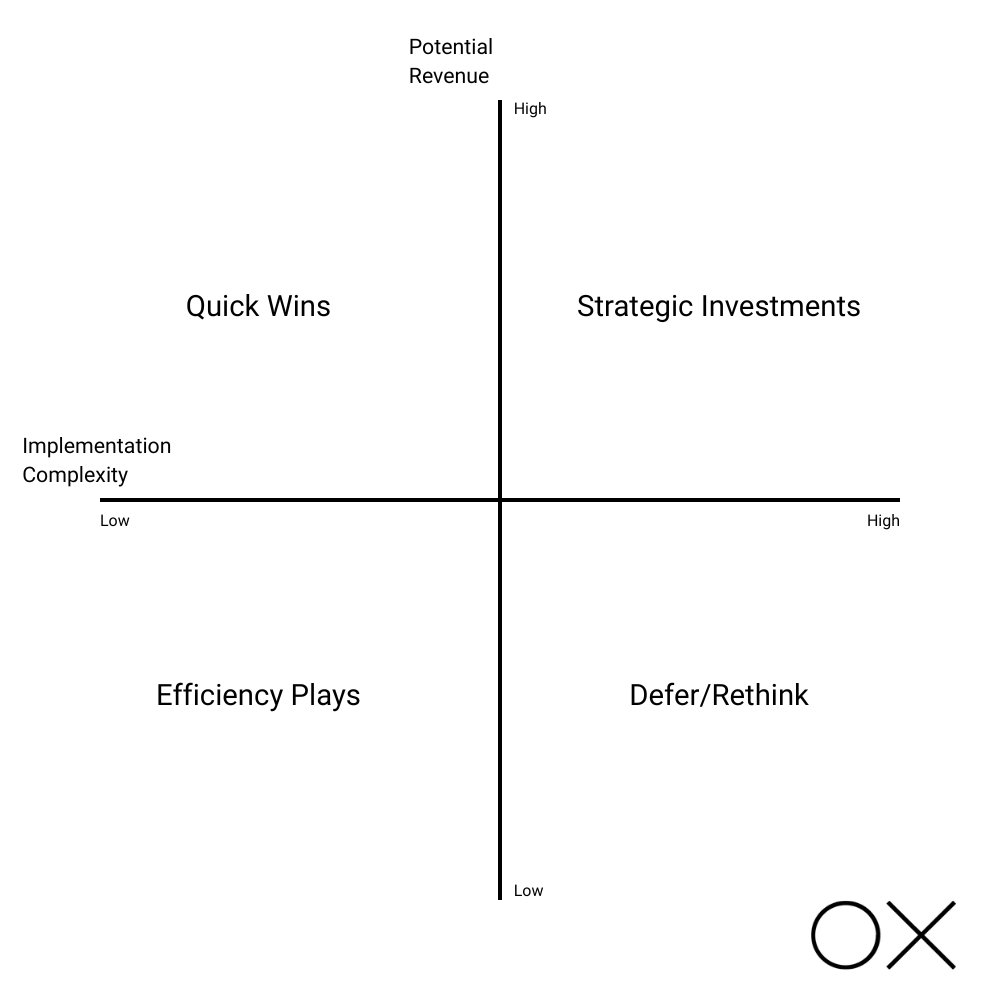
Business
Cultivating Organizational Support: How to Get Buy-in for Your Marketing Initiatives
As a CMO or Head of eCommerce, you know that bold marketing ideas need strong support to flourish—not because they lack merit, but because they deserve proper financial investment. Hesitation often stems from risk aversions and opportunities for clearer ROI measurement. But what if these challenges could be reframed as growth opportunities? What if, instead of viewing executive leadership as a gatekeeper, you recognized them as strategic allies?
At The Office of Experience, we've helped marketing leaders shift that dynamic—evolving from budget discussions to boardroom partnerships. Here's how you can do the same.
The Strategic CMO/Executive Relationship
A 2019 McKinsey study revealed that 83% of CEOs expect marketing to be the key driver of business growth in the digital age. And yet, many executive team members still view marketing spend as speculative rather than strategic. This disconnect isn’t due to lack of impact—but rather, lack of translation between marketing activities and business outcomes.
Google's “The Effectiveness Equation” report nailed it: one of the biggest threats to marketing budgets isn't underperformance, but internal misalignment. In high-stakes, growth-focused environments, failing to connect marketing initiatives to financial metrics and business outcomes results in missed opportunities and stalled growth potential.
To succeed, CMOs and eCommerce leaders must speak a language that executive leadership understands—grounded in a strong business case supported by meaningful financial metrics such as projected ROI and/or ROAS. This shared language of business impact creates alignment around marketing’s strategic role in driving sustainable growth.
Translating Marketing to Business Value
Even the most innovative marketing initiatives need to be framed through a financial lens. Executive leadership doesn’t want impressions and reach—they want measurable returns, value-based marketing strategies, and predictive forecasts.
Here's how to frame your initiatives to gain traction:
- Customer Acquisition Cost (CAC): Show efficiency improvements over time
- Customer Lifetime Value (CLTV): Highlight long-term revenue contribution
- Revenue Forecasts: Present conservative, moderate, and aggressive scenarios
- Investment Payback Periods: Calculate how soon the initiative pays for itself
- Marketing Attribution Models: Determine the best model for your business objectives and share results in monthly or quarterly business reviews
- Risk Mitigation Plan: Include what could go wrong and how you'll course correct
This approach shifts perception from marketing as a cost center to marketing as a strategic investment and contributor to measurable business growth.
Visualize the Opportunity: A Strategic Framework for Marketing Initiatives
Executive leadership tends to gravitate toward structured decision frameworks—it’s how they evaluate investments across the organization. By adopting a similar visualization approach for your marketing initiatives, you can bridge the communication gap and present marketing decisions in a format that resonates with executive leadership.
The Marketing Initiative Quadrant
Structure your proposed initiatives using axes familiar to finance:
- X-axis: Implementation Complexity (Low to High)
- Y-axis: Potential Revenue Impact (Low to High)
This creates four distinct strategic zones that transform abstract marketing concepts into a business investment portfolio.
1. Quick Wins (Low complexity, High impact)
- Initiatives with straightforward implementation and significant revenue potential
- Ideal for demonstrating immediate ROI to build credibility with leadership
- Example: Optimizing existing conversion funnels, implementing targeted email automation, or an A/B testing program
2. Strategic Investments (High complexity, High impact)
- Initiatives requiring substantial resources but delivering major revenue growth
- Best positioned as phased investments with clear milestones
- Example: Comprehensive marketing platform implementations, customer
3. Efficiency Plays (Low complexity, Lower impact)
- Simple improvements that improve operational efficiency or create modest revenue gains
- Present these as cost reductions or optimization efforts
- Example: Streamlining marketing workflows, consolidating redundant martech tools, or a content repurposing strategy
4. Defer or Rethink (High complexity, Lower impact)
- Complex initiatives with questionable returns
- Acknowledge these transparently to demonstrate critical thinking
- Example: Implementing emerging technologies without clear use cases

For each initiative placed in the quadrant, include these financial metrics:
- Total investment
- Growth marketing metrics
- Risk scores
- Required cross-functional support
- Expected timeline for outcomes
By reframing your strategy as a portfolio of business investments, you’re meeting executive leadership where they are—analytical, structured, and focused on long-term value.
Shift the Narrative: Marketing as a Revenue Driver, Not Expense Line
Marketing doesn’t just support growth—it drives it. But that narrative won’t shift on its own—you have to own it. Here’s how:
- Tie every initiative to measurable revenue outcomes
- Ruthlessly cut underperforming programs
- Reinvest in what works
- Speak the language of finance fluently and often
- Pilot first, then scale based on demonstrated ROI
According to Google’s research for The Effectiveness Equation report, the most effective companies treat marketing spend as a capital investment, not a variable cost. The shift from cost center to revenue marketing engine begins with how you tell your story.
Maintain Visibility
Executive stakeholder management is an ongoing process. Getting budget sign-off is just the beginning. Keep the relationship strong by:
- Hosting quarterly business reviews with the executive leadership team
- Creating joint dashboards that track ROI, budget utilization, and pipeline influence
- Celebrating wins, learning from failures, and adjusting plans collaboratively
Ongoing transparency fosters shared accountability and creates a culture where marketing and executive leadership are truly aligned.
The alignment between marketing and executive leadership represents a strategic opportunity. When you lead with clarity, accountability, and data, you don’t just secure a budget—you position yourself as an architect of the company’s growth engine.
At The Office of Experience, we help enterprise marketing leaders craft the right narrative, build the right models, and drive the kind of strategic alignment that transforms marketing into a revenue multiplier.
Want help turning your next big idea into a board-approved growth engine? Let’s talk. → .
Drop us a line
ALL FIELDS REQUIRED







